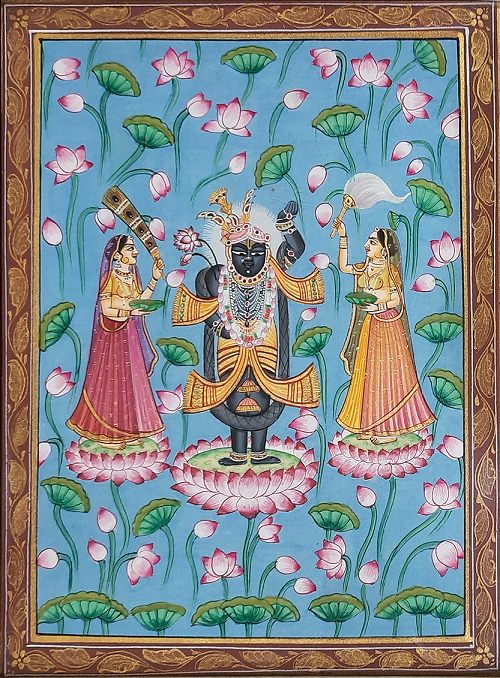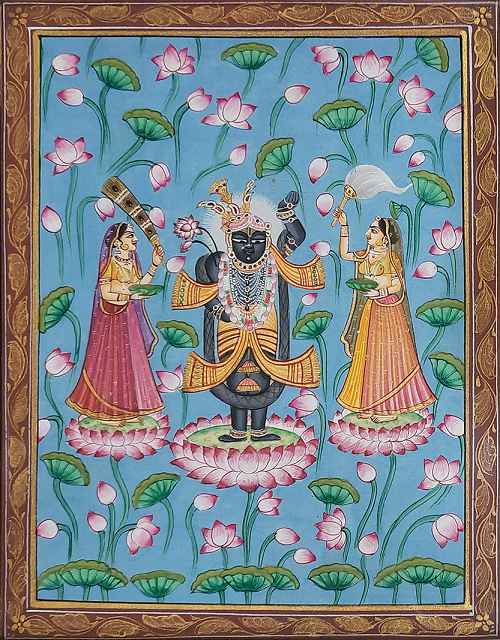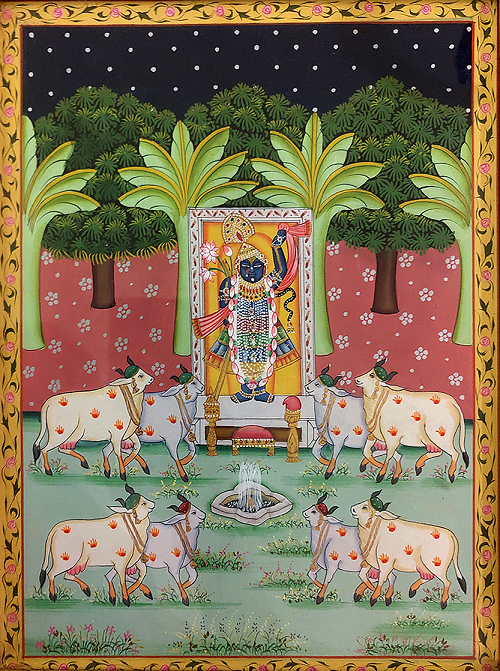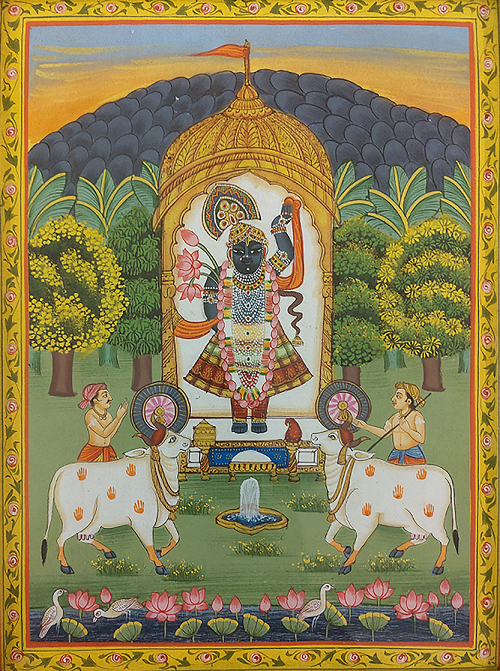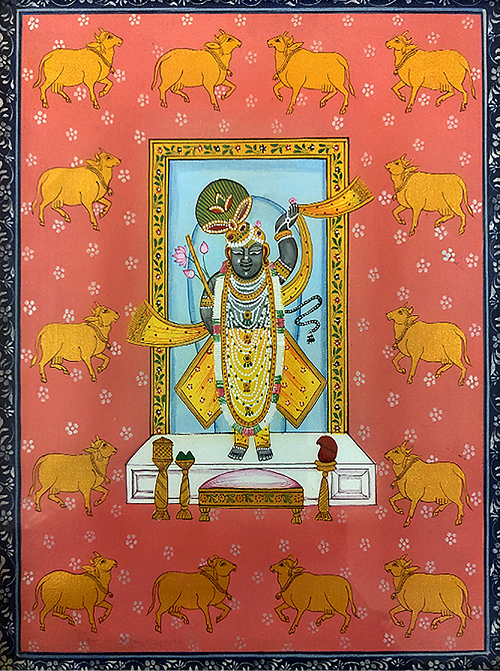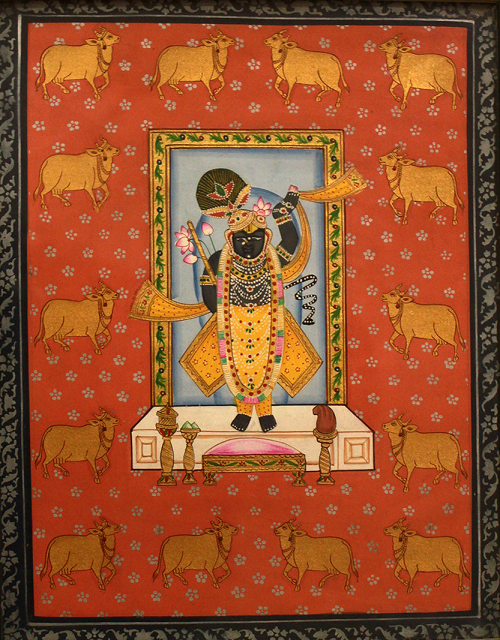Natural Colour Painting on Silk
-
Kamal Talai
₹2,500.00 ₹2,200.00 -
Traditional 9
₹2,500.00 ₹2,200.00 -
Traditional 6
₹2,500.00 ₹2,200.00 -
Traditional 5
Sold
As societies developed around the world, transportation of materials became more common. This was the case in ancient Greece and Egypt, where people bought paint from all over Europe and Asia to paint their temples and tombs. Painting processes also began to change, allowing artists a wider color palette to choose from, though still restrictive. For example, sand, lime, and copper stone could be mixed and burned to produce an Egyptian blue bright reds were produced by mixing and spraying together harmful mercury and sulfur; and whitewash was made by dipping the lead in earthenware pots with vinegar and covering them with compost. Early paints used animal fat and saliva as a binding, and later - during the middle ages - artists used eggs to blend in with their colors. By the 15th century, however, painters began to use oil and dramatically changed the art of painting.
Nearly 6,000 years ago, the blue pigment called “ultramarine” was created from a gemstone, lapis lazuli. The blue stone was first imported by the Egyptians from the mountains of Afghanistan to make jewellery and heads. However, with the introduction of Italian traders into Europe during the 14th and 15th centuries, artists produced a blue powder on a gemstone. Pigment was in high demand among medieval artists, and it was considered as precious as gold. Such histories foretell the enchantment of natural pigments and how their use has been going on for quite some time now. Aside from the environmental factors of living things, natural pigment is also one of the purest forms of color and its ability to produce an intense hue is unmatched. From ancient Egypt, to the iconic renaissance paintings, to modern art examples, cultures around the world use natural color skills. A popular use of natural dyes is in fabric- painting and dying, however, it is significant to remember that not all fabrics can be painted with natural colors. The best fabrics you can use are those made of natural materials such as cotton and buy silk painting.
For silk painting india online, plants rich in tannin such as logwood, weld (also called dyer's weed), tea, indigo, turmeric, purple cabbage, pomegranate rinds etc. Are mostly used. Many will dye it raw in a pan to remove all the color, and boil it to increase viscosity and enhance texture. There are a number of steps involved in creating a silk drawing using natural dyes: for example, slowly moving your design from paper to silk with disappearing markings and defining the design with gutta-percha - natural latex - to keep the dye binding. The dyes are then applied to the listed areas just as you would paint with watercolors. Creating silk paintings natural dyes requires a certain patience and motivation and when the paintings have finished, you should lock the colors with heat. The heat from the steam sets the dye on the silk and makes it permanent. A number of east-asian artworks utilize this medium and the detailing on these online silk paintings are quite intricate, yet bold. A fresh, eco-friendly and gracious technique, silk painting with natural dyes has a yesteryear charm.







